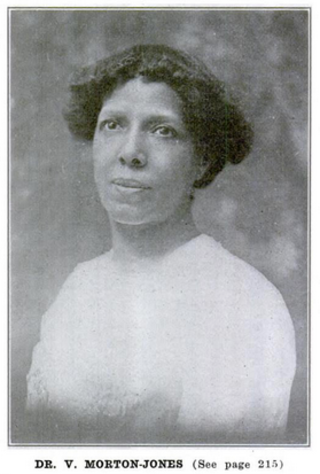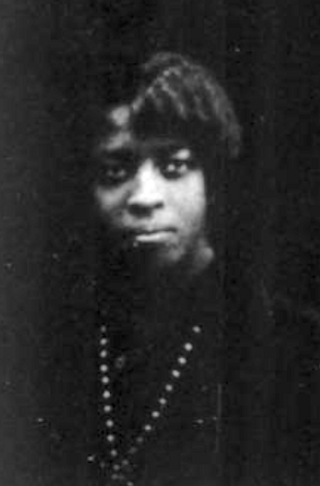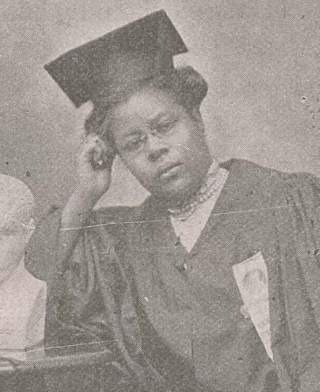
Harriet Tubman was an American abolitionist and social activist. After escaping slavery, Tubman made some 13 missions to rescue approximately 70 enslaved people, including her family and friends, using the network of antislavery activists and safe houses known collectively as the Underground Railroad. During the American Civil War, she served as an armed scout and spy for the Union Army. In her later years, Tubman was an activist in the movement for women's suffrage.

Ann Petry was an American writer of novels, short stories, children's books and journalism. Her 1946 debut novel The Street became the first novel by an African-American woman to sell more than a million copies.

Harriet Tubman Grave is an historic gravesite located in Fort Hill Cemetery at Auburn, in Cayuga County, New York. The granite gravestone marks the resting place of famed African-American abolitionist and Christian Harriet Tubman, who was born into slavery in Maryland in the United States in 1822.
A number of theatre companies are associated with the Harlem Renaissance.

Verina Harris Morton Jones was an American physician, suffragist and clubwoman. Following her graduation from the Woman's Medical College of Pennsylvania in 1888 she was the first woman licensed to practice medicine in Mississippi. She then moved to Brooklyn where she co-founded and led the Lincoln Settlement House. Jones was involved with numerous civic and activist organizations and was elected to the board of directors of the National Association for the Advancement of Colored People (NAACP).

Harriet Gibbs Marshall was an American pianist, writer, and educator of music. She is best known for opening the Washington Conservatory of Music and School of Expression in 1903 in Washington, D.C.
Ruth Logan Roberts was a suffragist, activist, YWCA leader, and host of a salon in Harlem, New York City.

Cecelia Cabaniss Saunders sometimes written as Cecilia Cabaniss Saunders, was an African-American civil rights leader, and executive director of the Harlem, New York YWCA. She is best known for working against racial discrimination in wartime employment during World War II, for broader work training and opportunities for African-American women, and against police violence in Harlem.

Harriet Tubman Day is an American holiday in honor of the anti-slavery activist Harriet Tubman, observed on March 10, and in the U.S. state of New York. Observances also occur locally around the U.S. state of Maryland. After Juneteenth became a federal holiday, there are growing calls for this day to also be observed at the federal level.

Eva del Vakia Bowles (1875–1943) was an American teacher and a Young Women's Christian Association organizer in New York City. When she began working at the New York City segregated YWCA in Harlem, she became the first black woman to be a general secretary of the organization. For eighteen years she organized black branches of the YWCA and expanded their services to community members. She received recognition from former president Theodore Roosevelt for her work during World War I on behalf of the segregated Y.

Mary Frances Gunner was an African American playwright and community leader based in Brooklyn, New York. She was also known as Francis Gunner Van Dunk.
The Empire State Federation of Women's Clubs (ESFWC) was founded in 1908 and is an umbrella organization for African-American women's groups in New York. The organization worked to help improve the lives of young women and helped care for Harriet Tubman until her death in 1913. The organization was affiliated with the National Association of Colored Women's Clubs, and worked with the NAACP.

Mary Elizabeth Jackson (1867–1923), was an African-American female suffrage activist, YWCA leader and writer. She worked with the Northeast Federation of Colored Women's Club and lead the suffrage movement with the National Association of Colored Women.

Mary Jackson McCrorey was an American educator, mission worker, and leader in the Young Women's Christian Association (YWCA).

Floria Pinkney was a Progressive Era Black female garment worker and union activist and leader from Brooklyn, New York. She was the first African-American woman to hold a leadership role as an organizer within the International Ladies Garment Workers Union (ILGWU). As a legacy dressmaker, Pinkney was involved in the garment industry throughout her life.

Emma S. Connor Ransom was an American educator and clubwoman, active in the African Methodist Episcopal Church (AME) and the YWCA.

Phyllis Terrell Langston was a suffragist and civil rights activist. She worked alongside her mother, Mary Church Terrell, in the National Association of Colored Women's Clubs and the White House pickets during demonstrations made by the National Woman's Party.

Gertrude Elizabeth Curtis, also known as Gertrude Curtis McPherson, was an American dentist. She had a longtime practice in Harlem.

Adena Clothilda Eugenie Minott was a Jamaican-born American educator and consultant. She was the only Black woman to be a fellow of the American Institute of Phrenology.
Lillian Anderson Turner Alexander (1876–1957) was an educator, social worker, civil rights activist, and club woman active in St. Paul, Minnesota, and New York City. Before 1918, she was known as Lillian A. Turner with her first husband's surname. After 1918, she used her second husband's surname and was known as Lillian A. Alexander.
















